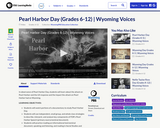
Students will learn about the attack on Pearl Harbor and the US response of the Pearl Harbor Day observance.
- Subject:
- English Language Arts
- History
- World History
- Material Type:
- Activity/Lab
- Lesson
- Provider:
- Wyoming PBS
- Date Added:
- 09/17/2019

Students will learn about the attack on Pearl Harbor and the US response of the Pearl Harbor Day observance.
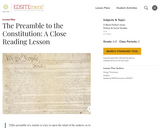
The Preamble is the introduction to the United States Constitution, and it serves two central purposes. First, it states the source from which the Constitution derives its authority: the sovereign people of the United States. Second, it sets forth the ends that the Constitution and the government that it establishes are meant to serve.
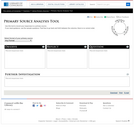
Use this tool to record your responses to a primary source. Sample questions are provided for guidance
Students may download or print completed analyses
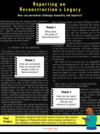
Students learn about the efforts of Ida B. Wells and other Black female journalists who used investigative reporting to challenge ideas and people that perpetuated social and political injustices. Students look to Black female journalists today by learning about Natasha S. Alford’s feature stories on race in Puerto Rico, and draw on past and present examples of journalism to help them respond to the unit driving question: How can journalism challenge inequality and injustice? Students use the tenets of investigative reporting to explore the achievements and challenges of the era, then work to shine a light on the possibilities of racial equity by writing and publishing a feature story about an issue of injustice today.

Students begin this unit by exploring the themes of humanity and community as they discuss the many factors that influence the development of personal identities. They unpack together how we show versus hide different parts of ourselves, and how our identities can be both fixed and ever-changing. Then, students listen to oral histories by Vietnamese Americans in Washington to learn how displacement and resettlement have impacted them personally and shaped their outlook on helping others. Using evidence from these firsthand accounts, students answer the question: What can the experiences of displaced people teach us about community, resilience, and humanity? Throughout this unit, students work in teams to create a podcast where they reflect on their collective responsibility to stand in solidarity with displaced people.
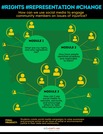
Students learn how young people in Washington exercised their rights and responsibilities through “fish-in” protests to fight for tribal fishing rights in the 1960s. Students use this example of civic engagement to reflect on their rights and responsibilities today, then begin to consider the unit-driving question: How can we use social media to engage community members on issues of injustice? Working in teams, students examine a case study on one of three critical issues: natural resources, the environment, or hazard preparedness. The case studies help students understand how social media can be used to raise awareness and promote action. Finally, teams create a social media campaign that engages their local elected officials and community on an issue of social and environmental justice.
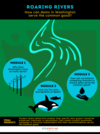
This unit begins with a challenge in which students must make a decision for the common good. The task highlights the importance of considering various stakeholder perspectives in order to serve the common good. Students transfer what they have learned to their study of a major dam project in Washington State. Teams focus on one of four projects (Upper Skagit Hydroelectric Project, Lower Snake River Project, Columbia River Gorge Project, Columbia River Basin Project). Each team works together to understand the perspectives of diverse stakeholders as they develop a response to the unit-driving question: How can dams in Washington serve the common good? Teams apply what they have learned to come up with a recommendation for the future of the dam project that considers how it will impact people and places.
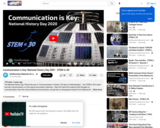
Learn how key communication is in the space and aviation industries. Hear first hand from experts their thoughts on communication and learn the science behind communication.

This inquiry unit leads students through the different perspectives behind a decision to have a dam removed. This unit looks at similar Washington state dam removal decisions as well as the complex issue of having the Election dam removed near Puyallup, WA. Students will be introduced to the stories and traditional ways of knowing about salmon that the Puyallup Tribe has built their culture upon. Then they will explore the science behind hydroelectricity and build models to discover how carbon neutral energy is gathered through hydro dams. This inquiry unit ends with students researching different perspectives surrounding the current (2021) decision to remove the Electron dam including: the Tribe’s Fishery department, the ecosystem, the city council, the fishermen and the hydro-electrical company who currently owns the dam. With their research, students will do a socratic seminar to mimic the court case lawsuit that is ongoing against the Electron Dam.
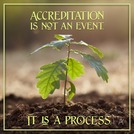
It's the main aspect in Educational system.

This lesson can work with any content standards. It is a lesson for students to learn a text marking procedure. Teachers and students can apply it to any non-fiction text on any non-fiction topic. Extensions include academic speaking and writing prompts.
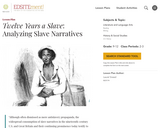
The corrupting influence of slavery on marriage and the family is a predominant theme in Solomon Northup's narrative Twelve Years a Slave. In this lesson, students are asked to identify and analyze narrative passages that provide evidence for how slavery undermined and perverted these social institutions. Northup collaborated with a white ghostwriter, David Wilson. Students will read the preface and identify and analyze statements Wilson makes to prove the narrative is true.
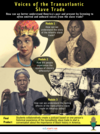
This unit begins by asking students to consider life in Africa before colonization and the forced enslavement of Africans. Students read Omar ibn Said’s autobiography to understand the Islamic scholar’s experiences before he was captured in West Africa and after he was enslaved in America. Excerpts from Olaudah Equiano’s autobiography provide a detailed glimpse of his childhood in Africa before he was kidnapped and sold into slavery. Students examine these two stories and others for evidence of resistance, liberation, connection to culture, and shared humanity as they develop a response to the question: How can we better understand America’s past and present by listening to often omitted and unheard voices from the slave trade? Working in teams, students create a podcast about an unheard story in order to start a conversation about the lasting effects of the Transatlantic slave trade and the importance of Black history in America.
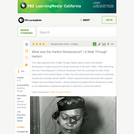
Professor Kate Rushin describes the Harlem Renaissance as a large social and cultural movement fueled by many factors in this video from A Walk Through Harlem.
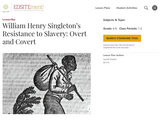
In this lesson, students will learn that enslaved people resisted their captivity constantly. Because they were living under the domination of their masters, slaves knew that direct, outright, overt resistance"”such as talking back, hitting their master or running away"“"“could result in being whipped, sold away from their families and friends, or even killed.